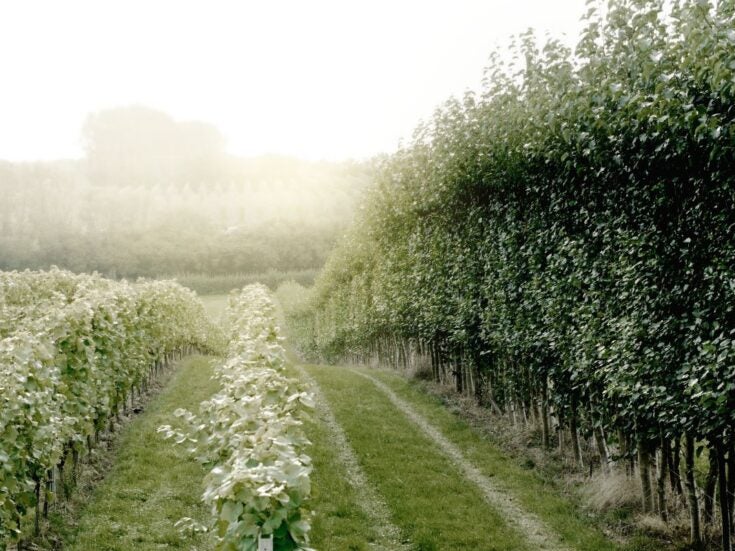
Timothy Mawn wonders why so few people appreciate the joy of the damson, an ancient British fruit with wonderful winter uses
IF SOMEONE WERE to offer you a damson, what would you do with it? A tiny plum, too sour to eat as a soft fruit, too fiddly to throw into a recipe, this capricious fruit needs to be carefully handled. To me, as a chef, it is philosophically comparable to the pupa of a butterfly: it is simply waiting for the right conditions to develop into something of majestic beauty.
The prunus domestica (wrongly titled in my opinion, prunus majestica being a far more worthy title) is a fruit that just begs to be laid down. This is a term that some chefs use as an unsavoury reference to a new waitresses or perhaps waiter, but to others is a means of preservation. You can thus savour it throughout the lean months, when the menu requires a helpful injection of fruit, when, in this land, all is barren.
Originally thought to derive from Syria, and traded throughout Europe and bought into England by the Romans, damson stones have actually been found at the fosse in York by archaeologists.
Up until the Second World War, orchards of damsons were part of the jam industry, but there is some evidence that the fruit was used in the British dye and cloth industry, which makes complete sense if you have ever cooked a batch, and splashed a chef’s white or shirt, as this will never come out in the wash.
Each year when the fruits are very cheap, I ceremoniously make a batch of damson cheese, which is in essence a jam cooked for longer until it sets, much the same as membrillo or quince paste, to be eaten with any of the Shire cheeses, Caerphilly,or a sharp hard ewes milk cheese, in the colder months.
If you are inclined to want to research this bullace further, then I would recommend speaking to the amazing collection of people doing sterling work at the National Fruit Collection.
In England we still have masses of fruit-bearing damson trees, often to be found growing wild, just like its cousin the sloe, but as with the mulberry tree, which happily grows upon our shores, it has fallen out of fashion and favour with the public as it is mildly tricky to process at home.
It is a great shame, as the depth of flavour, colour, and quite frankly sheer unique mystery and sexiness is unheralded by any other fruit. Just roll the words ‘damson ripple ice cream’ around in your head a couple of times and if that is not remotely erotic, then lock me up.
Here follow a few ways to enjoy this elegant fruit that nobody else seems to use:
• Pickled damsons, for an elegant accompaniment to goose or cold cuts at Christmas;
• Spiced damson chutney for duck or ham;
• Damson jam, equal weights of fruit to sugar;
• Damson cheese, same as jam, no need for pectin as the stones, which must be removed, hold huge amounts;
• Autumn fruit compote: damsons, Bramleys and late Scottish raspberries. Cook on a Sunday night for a week’s breakfasts of yoghurt or porridge. I would recommend ground flax seeds for a whole days nutrition;
• Damson gin: enjoy in front of a log fire in the winter months.
Read more on food from Spear’s
Don’t miss out on the best of Spear’s articles – sign up to the Spear’s weekly newsletter
[related_companies]






